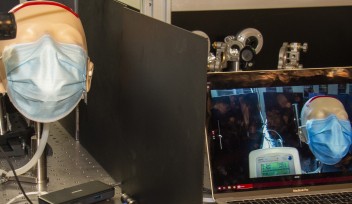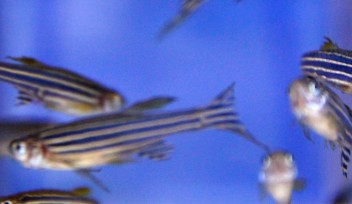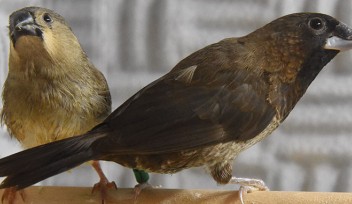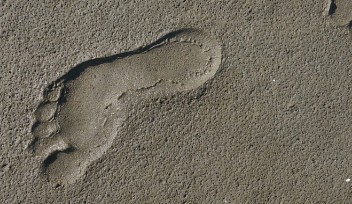OIST researchers awarded JST FOREST grant

In February 2021, OIST researchers, Dr. Yosuke Yamada, Dr. Reina Komiya and Professor Ryota Kabe were selected to participate in the prestigious FOREST (Fusion Oriented REsearch for disruptive Science and Technology) program.
Organized by Japan Science and Technology Agency (JST), the program aims to foster disruptive and interdisciplinary research by young, independent researchers working at Japanese institutions.
This grant is unique for its long-term nature, typically lasting seven years but with the potential to extend up to ten years and is split into two different phases. FOREST researchers will receive a maximum of 20 million yen for the first three-year stage, with an additional maximum of 30 million yen for the second four-year stage.
Throughout the program, participants are mentored by Program Officers – distinguished scientists who help foster integration and collaboration between the participants.
Dr. Yosuke Yamada
One of the FOREST program’s initiates is Dr. Yosuke Yamada, a postdoctoral researcher in the Marine Biophysics Unit, headed by Professor Satoshi Mitarai.

Dr. Yamada’s research focuses on bacteria and the role these organisms play in the marine carbon cycle.
“Bacteria are small – too small to see with the naked eye – but they are the most abundant organism in the ocean,” said Dr. Yamada. “Around half of all carbon fixed by phytoplankton in the ocean is utilized by bacteria, so they are really important for understanding the carbon cycle.”
One way that bacteria take in carbon is via small organic particles in the ocean, including organic matter from phytoplankton or cell debris, which attach to the surface of bacteria.
For the first three-year phase of the FOREST project, Dr. Yamada is collecting samples of bacteria and nanoparticles from different locations around Okinawa and using state-of-the-art microscopy to image the surface of bacteria.
His aim is to understand how the surface properties of different bacteria affect how easily nanoparticles can attach. He is also modelling how changes in ocean conditions, such as pH, salinity and temperature, impact nanoparticle attachment.
“As climate change occurs, the oceans are warming and becoming more acidified, so these models are important for predicting how these changes will affect the attachment of nanoparticles,” he explained.
For the second phase, Dr. Yamada plans to quantify how much carbon is taken up, depending on the different types of nanoparticles that attach to the bacteria, allowing him to build up a robust picture of how changes in nanoparticle attachment will impact carbon recycling as a whole.
“I’m very excited to receive this grant,” Dr. Yamada added. “It’s a big responsibility so it’s very important to succeed.”
Dr. Reina Komiya
Dr. Reina Komiya, an Associate researcher in the Science and Technology Group, has also been awarded a place on the FOREST program, for her work on improving the productivity of rice.

For Dr. Komiya, her work is deeply personal, with the potential to help contribute to the Sustainable Development Goals (SDGs) of no hunger and no poverty. “Food poverty is a big problem in Okinawa, particularly for families with children, so this research is really important to me. Having such a long-term grant is amazing – it gives me the freedom to develop my research and take on more ambitious and challenging projects.”
Komiya studies the role of non-coding RNA in rice reproduction. Non-coding RNAs are molecules that are created from DNA that don’t code for proteins.
So far, researchers have identified thousands of non-coding RNA molecules, but their exact function in how they help the plant reproductive system develop remains poorly understood.
Piecing together the function of each non-coding RNA is therefore the goal of the first phase of the FOREST program for Dr. Komiya.
Ultimately, her final goal is to create a system with customizable non-coding RNAs that help the rice adapt and reproduce well even in challenging environments, like hot and dry climates.
“Rice is a staple food for a large proportion of the world, so it’s a really important resource that needs to be able to reproduce effectively,” said Dr. Komiya. “Climate change has a huge impact on environmental conditions, so adaptation is crucial for maintaining a stable yield of crops.”
You can read more about Dr. Komiya’s recent work here.
Professor Ryota Kabe
The final recipient is Professor Ryota Kabe, who leads the Organic Optoelectronics Unit.

His research explores the interplay between electrons and light in organic materials. When these materials absorb a photon of light, this energy causes electrons inside the material to jump to a higher energy level to form an excited state. Usually, the excited state of a material is unstable, lasting only one thousand-millionth of a second.
Once the electrons return to the unexcited ground state, the material then releases the energy by emitting a photon of light. But Prof. Kabe is researching ways to store the energy inside the material for longer periods of time, perhaps even indefinitely, by using two organic molecules.
“One of the main applications for this work is for creating glow-in-the-dark materials, such as for emergency signs,” said Prof. Kabe. “Or it can be used to make new types of sensors, such as photo detectors and bioimaging devices.”
These properties are known in inorganic materials, but working with organic materials provides a cheaper, greener solution, explained Prof. Kabe. These materials also allow him to explore new applications, as the material can be in a liquid or solution state.
“I’m very honored to have received this grant,” said Prof. Kabe. “I’m particularly looking forward to working with my program officer, Professor Kenichiro Itami at Nagoya University who is a famous Japanese chemist, and for future possible collaborations with researchers in other universities.”
You can read more about Prof. Kabe’s work here.
Specialties
For press enquiries:
Press Inquiry Form














